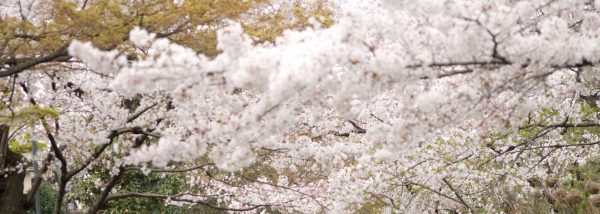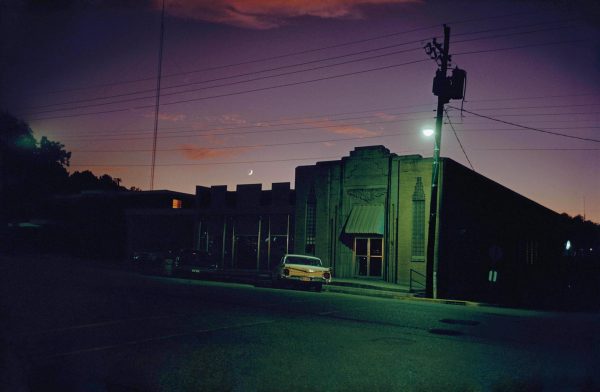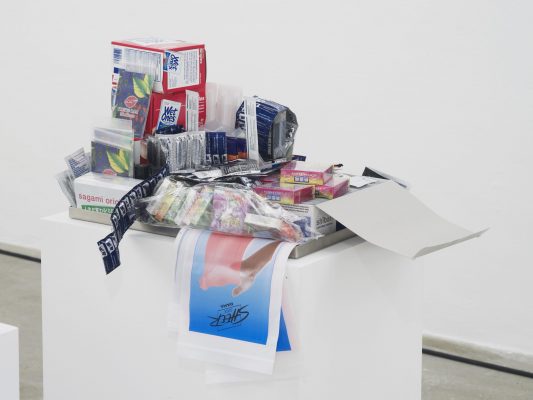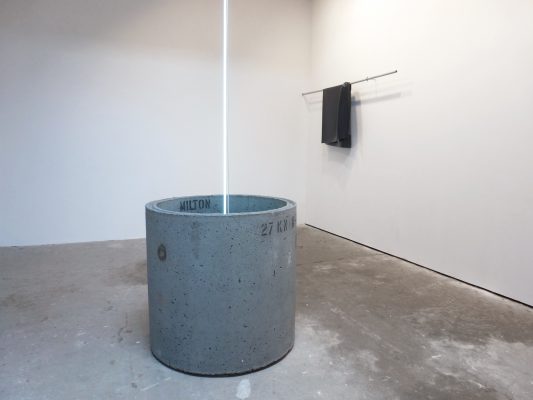1
KAMO-HUNTER
Everything around it moves, as if just this one time and one time only, as if the message of Heraclitus has arrived here through some deep current, from the distance of an entire universe, in spite of all the senseless obstacles, because the water moves, it flows, it arrives, and cascades; now and then the silken breeze sways, the mountains quiver in the scourging heat, but this heat itself also moves, trembles, and vibrates in the land, as do the tall scattered grass-islands, the grass, blade by blade, in the riverbed; each individual shallow wave, as it falls, tumbles over the low weirs, and then, every inconceivable fleeting element of this subsiding wave, and all the individual glitterings of light flashing on the surface of this fleeting element, this surface suddenly emerging and just as quickly collapsing, with its drops of light dying down, scintillating, and then reeling in all directions, inexpressible in words; clouds are gathering; the restless, jarring blue sky high above; the sun is concentrated with horrific strength, yet still indescribable, extending onto the entire momentary creation, maddeningly brilliant, blindingly radiant; the fish and the frogs and the beetles and the tiny reptiles are in the river; the cars and the buses, from the northbound number 3 to the number 32 up to the number 38, inexorably creep along on the steaming asphalt roads built parallel on both embankments, then the rapidly propelled bicycles below the breakwaters, the men and women strolling next to the river along paths that were built or inscribed into the dust, and the blocking stones, too, set down artificially and asymmetrically underneath the mass of gliding water: everything is at play or alive, so that things happen, move on, dash along, proceed forward, sink down, rise up, disappear, emerge again, run and flow and rush somewhere, only it, the Ooshirosagi, does not move at all, this enormous snow-white bird, open to attack by all, not concealing its defenselessness; this hunter, it leans forward, its neck folded in an S-form, and it now extends its head and long hard beak out from this S-form, and strains the whole, but at the same time it is strained downward, its wings pressed tightly against its body, its thin legs searching for a firm point beneath the water’s surface; it fixes its gaze on the flowing surface of the water, the surface, yes, while it sees, crystal-clear, what lies beneath this surface, down below in the refractions of light, however rapidly it may arrive, if it does arrive, if it ends up there, if a fish, a frog, a beetle, a tiny reptile arrives with the water that gurgles as the flow is broken and foams up again, with one single precise and quick movement, the bird shall strike with its beak, and lift something up, it’s not even possible to see what it is, everything happens with such lightning speed, it’s not possible to see, only to know that it is a fish — an amago, an ayu, a huna, a kamotsuka, a mugitsuku or an unagi or something else — and that is why it stood there, almost in the middle of the Kamo River, in the shallow water; and there it stands, in one time, immeasurable in its passing, and yet beyond all doubt extant, one time proceeding neither forward nor backward, but just swirling and moving nowhere, like an inconceivably complex net, cast out into time; and this motionlessness, despite all its strength, must be born and sustained, and it would only be fitting to grasp this simultaneously, but it is precisely that, this simultaneous grasping, that cannot be realized, so it remains unsaid, and even the entirety of the words that want to describe it do not appear, not even the separate words; yet still the bird must lean upon one single moment all at once, and in doing so, must obstruct all movement: all alone, within its own self, in the frenzy of events, in the exact center of an absolute, swarming, teeming world, it must remain there in this cast-out moment, so that this moment as it were closes down upon it, and then the moment is closed, so that the bird may bring its snow-white body to a dead halt in the exact center of this furious movement, so that it may impress its own motionlessness against the dreadful forces breaking over it from all directions, because what comes only much later is that once again it will take part in this furious motion, in the total frenzy of everything, and it too will move, in a lightning-quick strike, together with everything else; for now, however, it remains within this enclosing moment, at the beginning of the hunt.
It comes from a world where eternal hunger is the ruler, so to state that it hunts means that it takes part in the general hunt, for all around it every living being falls upon its prescribed prey in the eternal hunt: falls upon it, strikes down upon it, approaches and seizes it, grabs its neck, breaks its spine or snaps it in the middle, then grazing on it, sniffing at it, licking it clean, puncturing it, sucking at it, despoiling it, nosing through it, biting it, swallowing it whole, and so on; hence the bird too stands in the inexhaustibility of the hunt, compelled to the goal of hunting, because in this way and this way only can it get at nourishment in this eternal starvation, in the obligatory hunt, extending accordingly to all: the hunt here is exclusively, or rather in this special case, enriched with another meaning as well — as the bird takes up its place, that is, as it plants its legs in the water, and so to speak stiffens itself: a meaning that this word usually does not provide, and so quoting the famous three sentences of Al-Zahad ibn Shahib, now with increased complexity: “A bird flies home across the sky. It appears to be tired, it had a difficult day. It returns from the hunt, it was hunted”; well, we need to alter this somehow, shifting the emphasis a little; that although it had a direct goal, it did not have a distant one, it existed in a space in which any sort of distant goal, any distant cause, was essentially impossible, yet making all the denser the weave of immediate goals and causes from which it was cast, and from which one day it shall necessarily perish.
Its one single natural enemy, however, the human being — the creature exiled into the daily enchantment of Evil and Sloth over there on the embankment — is not watching it, as on the paths inscribed into the dust on either side of the riverbed right now, he walks, jogs, cycles homeward or away from it, or respectively, just sitting on a bench spending his lunch hour there with his nigiri — that is, rice-triangles wrapped in seaweed, purchased at the nearby 7-Eleven — not now does he watch it, not today; maybe tomorrow or some other time, if there is any reason; but even if there were someone to look, the bird wouldn’t even take much notice, it has got used to the humans on the embankment, just as they have got used to the large bird standing around in the middle of the shallow river; today, however, this is not occurring on either side of the river, neither one is taking any notice of the other, although someone could observe that there it is, in the middle of the Kamo, the water largely reaching up to its knees, hence the truly quite shallow weir, interspersed with small grassy enclaves, hence truly peculiar, if not the most bizarre river upon the globe, and the bird just stands, without a single movement, its body strained forward, waiting staggeringly long minutes for the day’s quarry, now already ten minutes, then a half-hour passes as well; in this waiting and attentiveness and motionlessness, time is cruelly long, and still it does not move, standing exactly the same, in exactly the same pose, not a single feather trembles, it stands, leaning forward, its beak bent at an acute angle over the mirror of the gurgling water; no one is looking, no one sees it, and if it’s not seen today then it is not seen for all eternity, the inexpressible beauty with which it stands shall remain concealed, the unique enchantment of its regal stillness shall remain unperceived: here with it, in the middle of the Kamo, in this motionlessness, in this snow-white tautness, something is lost before it even has a chance to appear, and there shall be no one to bear witness to the recognition that it is the one that gives meaning to everything around it, gives meaning to the spinning churning world of movement, to the dry parching heat, the vibrations, every whirling sound, scent, and picture, because it is a completely unique feature of this land, the unyielding artist of this landscape, who in its aesthetic of unparalleled motionlessness, as the fulfillment of unswerving artistic observation, rises once and for all above that to which it gives meaning, rises above it, above the frantic cavalcade of all the surrounding things, and introduces a kind of aimlessness — beautiful as well — above the local meaning permeating everything, as well as above that of its own actual activity, because what is the point of being beautiful, especially when it is just a white bird standing and waiting for something to appear below the surface of the water that, with its ruthlessly accurate beak and will, it then spears.
All of this occurs in Kyōto, and Kyōto is the City of Infinite Demeanor, the Tribunal of those Condemned to Correct Behavior, the Paradise of the Maintenance of Correct Attitude, the Penal Colony of Omission. The maze of this city emerges from the labyrinth of Demeanor, Behavior, Attitude, from the infinite complexity of stipulations of the affinity to things. There is no palace and no garden, there are no streets and inner spaces, there is no sky above the city, no nature, no momiji turning scarlet in the autumn in the distant mountains that surround and embrace the city, or any pearlwort in the courtyards of the monastery, there is no network of the remaining Nishijin silk-weaving workshops, there is no Geisha quarter with Fukuzuru-san concealed next to the Kitano-Tenmangū shrine; there is no Katsura Rikyū with its pure architectural discipline, no Nijō-jō with the dazzle of the paintings of the Kano family, the uncertain memory of the bleak setting of Rashōmon; no sweet intersection of the Shijō-Kawaramachi in the city center in the frenzied summer of 2005, and there is no charming arch of the Shijobashi — the bridge which directs one to the eternally elegant and enigmatic Gion — and there are not those two enchanting dimples on the little face of one of the dancing geishas of Kitano-odori: there is only the Colossal Agglomeration of Stipulations, the etiquette that functions above all things and extends to all things; this order that cannot, however, be completely grasped by a human being, this Prison of Complexity — at once unalterable and mercurial — between things and people, people and people, and furthermore, between things and things, for it is only like this, through this, that existence may be granted to all the palaces and gardens, the streets aligned in a grid pattern and the sky and nature, and the Nishijin-quarter and Fukuzuru-san and the Katsura Rikyū and the place where Rashōmon was and those two enchanting dimples in the little face of the Kitano-odori geisha, as this geisha, born into charm, turns her fan away from her face for a mere fraction of an instant, so that everyone can see — but really just for a single instant — those two immortally beautiful dimples, that unaffected, bewitching, captivating and corrupting smile before the public comprised of the base gazes of the filthy rich patrons.
Kyōto is the City of Endless Allusions, where nothing is identical to itself, and never could have been, every individual part points backward to the great collective, to some unpreservable Glory, from where its own self of today originates, a Glory that subsists in the hazy past, or which the mere fact of the past created, so that it is not even possible to grasp it in one of its elements, or even to glimpse it in something which is here, because he who tries to see into the city loses even the very first element of it: who, as a visitor would, alighting at the monumental Kyōto Station from the Shinkansen bullet train, arriving from the old Edo, if, getting out, he finds the right exit and strolls into the underground passages resembling an amusement park in their complexity, strolls into the head of the Karasumi-dori, and glimpses, let’s say, on the left side of the road leading directly to the north, the long, yellow exterior walls, commanding respect, of the Higashi-Honganji Buddhist temple, already visible from the station; in that very moment, he has already left the space of possibility, the possibility that he could see the Higashi-Honganji of today, as the Higashi-Honganji of today does not exist; as the eye looks upon it, the Higashi-Honganji of today is immediately submerged by what would be most inaccurately designated as the past of the Higashi-Honganji, for the Higashi-Honganji never had a past, or a yesterday or a day before yesterday, there are only thousands and thousands of Allusions to the obscure pasts of the Higashi-Honganji, so that the most impossible situation is created, that there is, so to speak, no Higashi-Honganji of today, just as there never was a Higashi-Honganji at one time, only an Allusion, commanding respect, there is one, there was one, and this Allusion floats across the entire city, as one enters into it, as one tramps across this prodigious empire of wonders, from the Tō-ji temple to the Enryaku-ji, from the Katsura Rikyū to the Tōfuku-ji, and finally reaching the given section of the Kamo — largely at the same elevation as the Kamigamo shrine — at the point where the river gurgles, to where it, the Ooshirasagi, stands: the only one for whom in a particular fashion there is just as much present as there is past, in that it has neither: for in reality it never existed in time moving forward or backward — it is granted the artist’s powers of observation, so that it may represent that which adjusts the axes of the place and the things in this ghostly city, so that it may represent the ungraspable, the inconceivable — as it is unreal — in other words: unbearable beauty.
A bird fishing in the water: to an indifferent bystander, if he were to notice, perhaps that is all he would see — he would, however, not just have to notice but would have to know in the widening comprehension of the first glance, at least to know and to see just how much this motionless bird, fishing there in between the grassy islets of the shallow water, how much this bird was accursedly superfluous; indeed he would have to be conscious, immediately conscious, of how much this enormous snow-white dignified creature is defenseless — because it was superfluous and defenseless, yes, and as so often, the one satisfactorily accounted for the other, namely, its superfluity made it defenseless and its defenselessness made it superfluous: a defenseless and superfluous sublimity; this, then, is the Ooshirosagi in the shallow waters of the Kamogawa, but of course the indifferent bystander never turns up; over there on the embankment people are walking, bicycles are rolling by, buses are running, but the Ooshirosagi just stands there imperturbably, its gaze cast beneath the surface of the foaming water, and the enduring value of its own incessant observation never changes, as the act of observation of this defenseless and superfluous artist leaves no doubt that its observation is truly unceasing, all one and the same if a fish, a tiny reptile, a beetle, or a crab comes along, which it will strike down with an unerring, merciless blow in that one single possible moment, just as it is certain that it came here from somewhere upon the dawn sky with the heavy, slow, and noble flapping of its wings, and that it shall return back there if twilight begins to fall, with the same flapping; it is certain as well that there is a nest somewhere back there, namely that there is something behind it, just as there could theoretically be something before it: a story, an event, hence a sequence of occurrences in its life; just that, well, the unceasingness of its observation, its watchfulness, its motionless pose betray that all of this is not even worth mentioning, namely that in its, the Ooshirosagi’s, case, matters such as these have no weight, are nothing — they’re foam, froth, spray, and spume — because for it, there is only its own unceasing observation, only this has weight; its story, which is unique; it is completely solitary, which also means that the motionless watching of this artist is the only thing that made and makes it the Ooshirosagi, without this, it could not even take part in existence, the unreal peak of which it is; that is why it was sent here, and why one day it will be called back.
There is not even the slightest trembling to indicate that at one point it will move from its state of utter motionlessness into that lightning-quick spearing, and that is why up until now this utter stillness decisively creates the impression that here, at the place that it occupies on the Kamogawa, there is not a snow-white great heron, it is nothingness standing there; and yet this nothingness is so intense, this watching, this observation, this unceasingness; this perfect nothingness, with its full potential, is clearly identical with anything that can happen, I can do anything, it suggests as it stands there, at any time and for any reason, but even though what it does will be anything, anywhere, and for any reason, for it, however, this will not mean upheaval but just a sharp instantaneous tilting, so that from this enormous space — the space of possibilities — there will be something; the world tilts, because something will happen out of the absolute character of its motionlessness, from this motionlessness strained to the utmost, it follows that at one point this infinite concentration will burst, and if the direct cause will be a fish — an amago, a kamotsuka, or an unagi — the goal is to swallow it down in one piece, to maintain its own life by spearing it, the entire scene is already far beyond itself; here, before our eyes, whether on the northbound number 3 bus or a battered bike, or strolling down below on the path inscribed into the dust of the banks of the Kamo; we are nonetheless all of us blind: we proceed alongside it having grown used to it, and if we were asked the question how is it possible for it to live, we would say we were beyond all that; there is only the hope now that from time to time there might be someone among us who might glance over there for no reason, completely by chance, and there his gaze would be fixed and for a time he wouldn’t even look away; he would somehow get mixed up in something he did not particularly want to get mixed up in, namely with this gaze — the intensity of his own gaze writhes, of course, in eternal undulations — he looks at it; it is simply not possible to hold a human gaze in such a state of unceasing tension, which however would be very necessary right now — namely, it is virtually impossible to maintain the same peak of intensity, and it follows that at a certain slack point in the trough of the wave of observation, the so-called lowest, perhaps even the absolutely lowest section of the wave of attentiveness — the spear strikes down, so that unfortunately the pair of eyes glancing over there by accident sees nothing, just a motionless bird leaning forward, doing nothing: such a person, with his brain in the trough of observation, would have been the only one among us — and perhaps he will never see anything else ever again and will remain that way for his entire life, and what could have given his life meaning is passed over, and because of that his life will be sad, impoverished, worn, dreary with bitterness: a life without hope, risk, or greatness, without the sense of any higher order — though all he would have had to do would have been to glance over while on the northbound number 3 bus, or on the battered bicycle, or while strolling on the path inscribed into the dust of the banks of the Kamo, to take a glance and see what was over there in the water, to see what the big white bird was doing there, motionlessly, as extending its neck, its head, its beak forward, it fixedly gazes at the foam-tossed surface of the water.
There is no other river like it in the world, if someone sees it for the first time he simply can’t believe his eyes, he just can’t believe it, and standing on one of the bridges — let us say, the Gojo-ohashi — he asks his companion, if there is one, what exactly is this here below us, in this wide riverbed, where at first water, but only in the narrowest of veins, trickles here and there between the completely absurd-looking islets; because this is the question, whether someone can believe what they are seeing or not; the Kamogawa is a relatively wide river in which there is so little water that in the riverbed the little islets, hundreds of them, are formed from silt, islets now overgrown with grass, the entire Kamogawa is full of such haphazard silt-islets overgrown with grass, knee- or chest-high, and it is between these that the little bit of water meanders, as if on the verge of completely drying up; what has happened here, a person asks his companion, if there is one; maybe some catastrophe or what, why has the river dried up so much? — he, however, must be content with the reply that oh, the Kamo was a very wild river, and beautiful, and certainly downstream by the Shijo-ohashi it still is, and sometimes here too, when the rainy season sets in, even now it can be filled up with water, until 1935 it flooded on a regular basis, for centuries they couldn’t control it, even in the Heike Monogatari it is described how they couldn’t control it, then Toyotami Hideyori ordered the regulation of the river, and a certain Suminokura Soan and his father Ryōi began to do so; indeed Ryōi completed the Takase canal and then its channel was straightened, and then by 1894 the Biwa canal was completed, but of course there were still floods, and the last time, precisely in 1935, so great was the flooding that nearly all of the bridges were destroyed, and there were many deaths, and unspeakable damage; well at that point, it was decided that they would finally put an end to its destructive strength, they decided they would build this and they would build that, and not just along the embankments but down there in the riverbed as well, a kind of system of irregular dams made of blocking stones, which would then break up the flow of the water that was excessively turbulent as it fell in torrents from the northwestern mountains; and so they broke it, says the local companion, if there is one, as is clearly visible, they were able to break its strength, there is no more flooding, no more death, no more damage, only these tricklings; these blocking stones, this system of dams work very effectively and, well, the birds — from the middle of the Gojo-ohashi — the local companion points upward and downward, many kilometers into the distance, and toward the riverbed; these countless birds, they come from the Biwa lake; but even he doesn’t know exactly from where, and there is everything here — Yurikamome, Kawasemi, Magamo, Onagagamo and Hidorigamo, Mejiro and Kinkurohajiro — really all different sorts and this kind and that, and little dragonflies dart about here and there, it is just the snow-white great heron that the local companion, if there is one, does not mention; he doesn’t mention it because he doesn’t see it, as he points over there, because of its continual motionlessness, everyone has got so used to it, it is always down there, they don’t even notice anymore, yet it is there as if it weren’t even there, it stands motionlessly, not even a single feather quivering, it leans forward, raking with its gaze the foamy froth of the water trickling down, the snow-white unceasingness of the Kamo, the axis of the city, the artist who is no more, who is invisible, who is needed by no one.
It would be better for you to turn around and go into the thick grasses, there where one of those strange grassy islets in the riverbed will completely cover you, it would be better if you do this for once and for all, because if you come back tomorrow, or after tomorrow, there will be no one at all to understand, no one to look, not even a single one among all your natural enemies that will be able to see who you really are; it would be better for you to go away this very evening when twilight begins to fall, it would be better for you to retreat with the others, if night begins to descend, and you should not come back if tomorrow, or after tomorrow, dawn breaks, because for you it will be much better for there to be no tomorrow and no day after tomorrow; so hide away now in the grass, sink down, fall onto your side, let your eyes slowly close, and die, for there is no point in the sublimity that you bear, die at midnight in the grass, sink down and fall, and let it be like that — breathe your last.
‘Kamo-Hunter’ is the first chapter from László Krasznahorkai’s latest translated novel, Seiobo There Below, published on 24 September 2013 by New Directions.
ABOUT THE CONTRIBUTOR
László Krasznahorkai
was born in Gyula, Hungary, in 1954. He worked for some years as an editor until 1984, when he became a freelance writer. He now lives in reclusiveness in the hills of Szentlászló. He has written five novels and won numerous prizes, including the 2013 Best Translated Book Award in Fiction for Satantango. In 1993, he won the Best Book of the Year Award in Germany for The Melancholy of Resistance.Ottilie Mulzet translates from Hungarian and Mongolian. She is currently completing a Ph.D. on the subject of Mongolian riddles and proverbs. Her artwork, prose, and photography have appeared in the Prague-based journal Revolver Revue since 2000.




